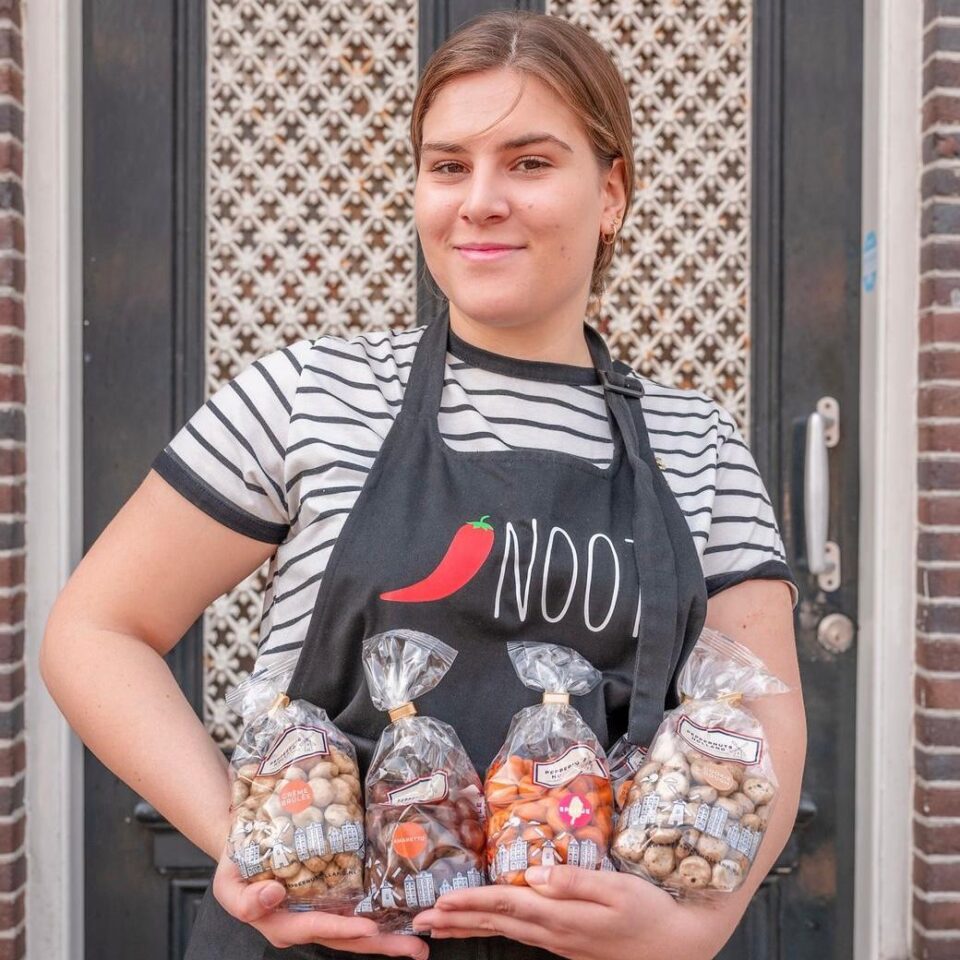About us
The pepernoot is a Dutch cookie with a long history. Originally, the cookie was founded in the 17th century from the scraps of gingerbread to celebrate the long tradition of Sinterklaas. Since then the cookie has found its own recipe and obtains the same spices, including cinnamon, nutmeg, cloves, ginger powder, cardamom and white pepper. Although the cookie is traditionally eaten at Sinterklaas in December it is often used in celebration throughout the year.
Because of the national love for the cookie we decided to level it up by dipping it in delicious Belgian chocolate and have many flavors. The cookies are all locally made with love just outside of Amsterdam so we can deliver you the most authentic cookie we can. You will see new flavors each year as we love experimenting with different tastes and textures to keep our customers excited. All while maintaining our best sellers as we know people have their favorites.
Miguel and I (Yasmin) started this family owned business in 2020 with only seasonal pop up stores. Since then, we have expanded into 6 permanent stores, bringing you delicious cookies all year round. In addition, we still open 10 pop up stores during the season and ship worldwide to ensure everyone has access to our cookies for Sinterklaas.
Be sure to try the famous cookie from Holland and keep an eye out for our new flavors throughout the years.


